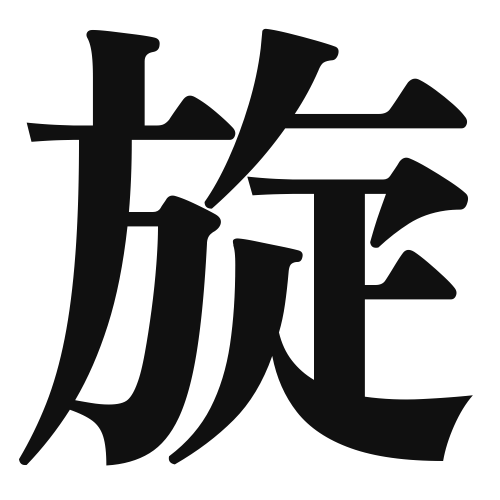1. Overview of Meaning
The kanji “旋” (sen) generally means “to spin” or “to rotate.” It conveys the idea of circular motion or turning around an axis.
2. Formation and Radical
Formation of the Kanji: The kanji “旋” is a phonetic-ideographic character (形声文字). It combines the meaning of rotation with phonetic elements to convey its sound and meaning.
Radical: The radical for “旋” is “回” (kai), which also relates to turning or revolving.
3. Examples of Usage
Common Words and Phrases: Some frequently used words that include “旋” are “旋律” (senritsu – melody) and “旋回” (senkai – rotation).
Example Sentences in Daily Conversation:
- この曲の旋律はとても美しいです。 (Kono kyoku no senritsu wa totemo utsukushii desu.) – The melody of this song is very beautiful.
- 地球は太陽の周りを旋回しています。 (Chikyuu wa taiyou no mawari o senkai shiteimasu.) – The Earth rotates around the Sun.
4. Synonyms and Antonyms
Similar Kanji: A similar kanji is “回” (kai), which also means to turn or revolve, but it is more focused on the act of turning rather than the concept of spinning.
Opposite Kanji: An antonym could be “静” (sei), which means “quiet” or “calm,” representing a lack of motion.
5. Cultural and Historical Background
Relation to Japanese Culture: The concept of rotation is significant in various aspects of Japanese culture, including traditional arts and crafts, where spinning techniques are used in pottery and textiles.
Proverbs and Idioms: One relevant proverb is “回り道も目的地へ行く” (Mawarimichi mo mokutekichi e iku), which means “A detour can also lead to the destination,” emphasizing that different paths can lead to the same goal.
